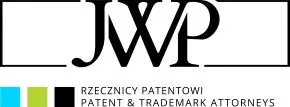- within Intellectual Property topic(s)
- in China
- in China
Attractive appearance is one of the main factors that influence consumer decisions on product selection. Good design gives manufacturers a significant competitive advantage and increases the value of the product, so it is worth protecting it properly to be able to use this advantage for a long time and effectively. More than 100,000 industrial designs are registered with the European Union Intellectual Property Office (EUIPO) every year. Since the Office began dealing with this intellectual property right, it has received over 1.6 million applications, including over 65,000 from Polish entrepreneurs.
The catalogue of products that can be protected from registration of an industrial design is huge. In addition to products that are quite obviously associated with industrial designs, such as furniture, jewellery, decorations, the appearance of utility equipment, as well as real and virtual interior design projects, as well as interfaces or website layouts, they can be protected as industrial designs. The new regulation, which is on the verge of entering into force, clearly extends this catalogue, indicating that "product" means any industrial or handicraft object, other than computer programs, regardless of whether it is included in a material object or materializes in a non-physical form. It is enough to present it properly in the form of classic 2D projections, photos or animations or 3D representations.
The process of registering an industrial design is extremely efficient. If the application is properly prepared, registration can be obtained in up to two days. This provides the opportunity to effectively refer to the registration, for example by using the protection tools offered by the sales portals. The disadvantage of this quick procedure is that the Office does not check earlier rights, which makes it possible to register non-new designs, the validity of which can be challenged at the request of entrepreneurs.
Having the right from the registration, we can prohibit not only the production, offering, marketing or use of the product in which the design is contained or used, but also the import or export of the product and their storage. Novum is the possibility of prohibiting the creation, downloading, copying and making available to other people any medium or software recording the design in order to enable the production of the product, we are talking about tools such as 3D printing.
The protection of industrial property rights is an investment
Industries requiring intensive design make a significant contribution to the economy of the European Union, accounting for almost 16% of GDP and at the same time 14% of all jobs. Thanks to a carefully prepared strategy, security expenditures are returned, for example in terms of saving expenditures in connection with the elimination of unnecessary disputes. It should also be emphasized that registration rights can reach a significant value and be traded. Industrial property rights are property rights and increase the value of the enterprise and its investment attractiveness.
Fees related to obtaining protection for an industrial design are usually an expense incurred once every five years, this is usually the duration of protection, which can be extended to 25 years. The amount of costs in individual countries and regions varies, so it is worth reaching for the support of a patent attorney who will develop a cost-effective strategy. The investment in obtaining protection can also be optimized. We are faced with the possibility of submitting collective applications – applying for protection of several, several or even several dozen products with one application. In this case, the fees fall by half, and if the number of designs is more than 10, by more than a further half: from 350 euros for the first design to 80 euros for the eleventh. Therefore, it is worth approaching applications strategically and planning them accordingly.
There are many programmes offering co-financing for the protection of industrial property rights. In 2024, the European Union Intellectual Property Office (EUIPO) reimbursed micro, small and medium-sized enterprises up to EUR 1,000 official fees for design and trademark applications. A similar program is likely to be launched in the coming year as well.
What conditions must be met to gain market exclusivity?
An industrial design is an external form of a product that is new and has an individual character, i.e. it has not been publicly disclosed in any way before the date of submitting the application to the office and its reception gives the impression of being different from known products from a given category. It is therefore most advantageous and safest to submit a design for registration before it is shown anywhere. In such a situation, the date of disclosure of the industrial design coincides with the date of its filing and we have a clear situation for law enforcement. However, if the entitled person is also the creator, the legislator provided him with the so-called relief in novelty lasting a maximum of one year. This means that the creator may submit a design for protection even one year after disclosure, without exposing the design to invalidation due to failure to meet the condition of novelty on the date of submission. There may be a need to collect evidence that "my" design is prior to a product that appeared on the market between disclosure and my application, but formally this disclosure will not constitute an obstacle (as would be the case for inventions and patent applications). This gives the entrepreneur time to examine the attractiveness of the design, check the market and decide on the scope of investments, e.g. which and where designs to protect.
The second tool allowing the entrepreneur to "gain time" is the possibility of establishing priority for the first design application. Priority is a legal term, but at the same time a very important business term. By registering a design, protection is obtained in a specific territory and only in this territory can this right be enforced. Often, at the very beginning of the business path, it is difficult to predict where a given product will be considered attractive, how much territorially the range of product offering will develop, and at the same time where there will be the greatest risk of violations. The possibility of appointing a priority gives us six months to "explore new markets". In practice, this means that we first obtain registration in an obvious territory, e.g. in Poland or the European Union, and only after a few months, but no later than within half a year from the date of the first application, you can apply for industrial design protection in subsequent countries with the priority of this first application. In this way, we do not lose the attribute of novelty (it is important to remember that it is examined on a global scale - disclosure in Poland does not mean that the design is still new in the United States), at the same time obtaining protection in another territory, somewhat with a retroactive date, because from the date of submission of the first design. This can be critical to:
- selection of protection territories (where the product sells well)
- prosecution of infringements that occur in territories where the design was not originally registered,
- spread of the investment involved in obtaining protection in more countries over time.
However, one should be careful, not everywhere and not always priority can be invoked.
Industrial Property Rights are Territorially Restricted
By registering a design in a given country, we obtain protection only in that territory. There are tools to assert your rights in the event of an infringement, even if we do not have a registration, however, the right to register a design is one of the most effective tools of protection. Often, creators, aware of the attractiveness of their product, would like to register a design around the world. Most countries have systems for the protection of industrial property rights, we have the possibility of international filing. However, there is no uniform system allowing the design to be protected worldwide by submitting a single application. Individual countries, but also international institutions associating different territories, offer many solutions that can be tailored to specific needs (production or distribution plans), however, an appropriate investment should be taken into account.
It is not only about tools. It's the strategy that counts.
The above considerations and recommendations come down to a key term - strategy. Industrial property rights serve to protect original solutions and are a tool for building the company's position on the market. A well-thought-out strategy for the protection and efficient management of intellectual property rights supports development and brings tangible benefits to the company. Of course, there are also other tools available to protect the appearance of new products, such as copyright, unfair competition regulations or the protection of an unregistered design, however, registration of a design seems to be the simplest and at the same time the most effective tool allowing to clearly state what, when and how it is protected on the basis of one document – a certificate of registration.
The content of this article is intended to provide a general guide to the subject matter. Specialist advice should be sought about your specific circumstances.


